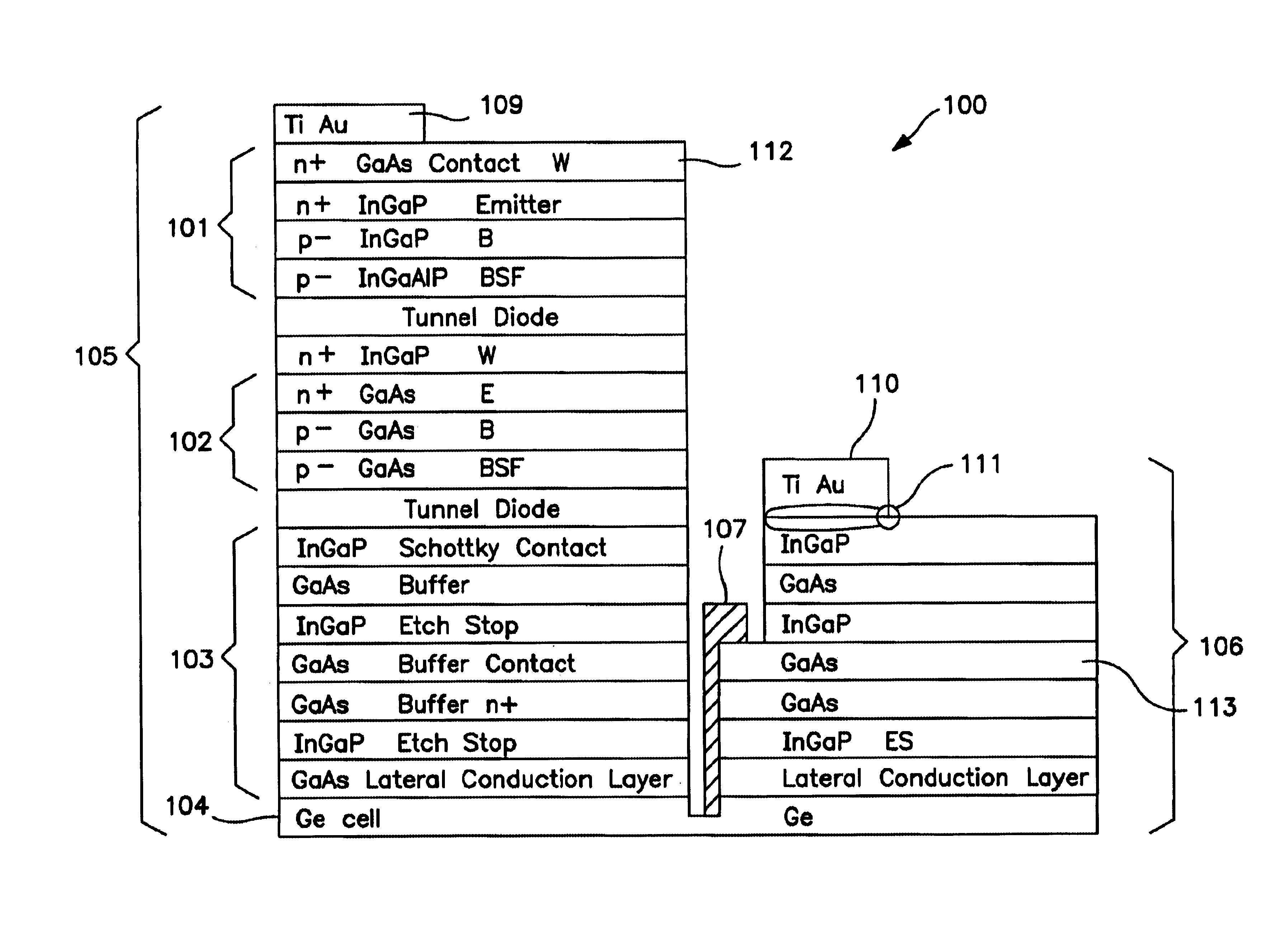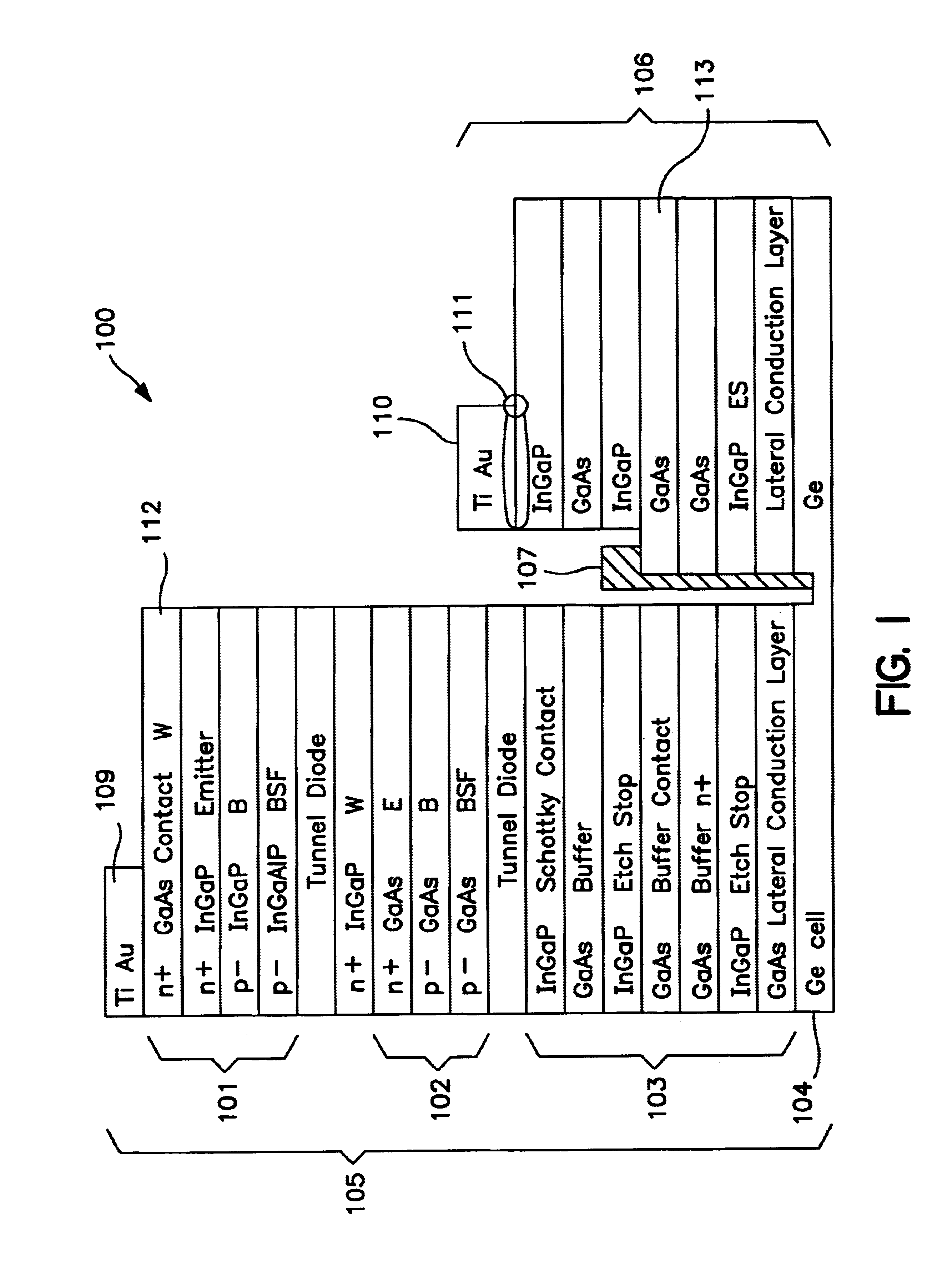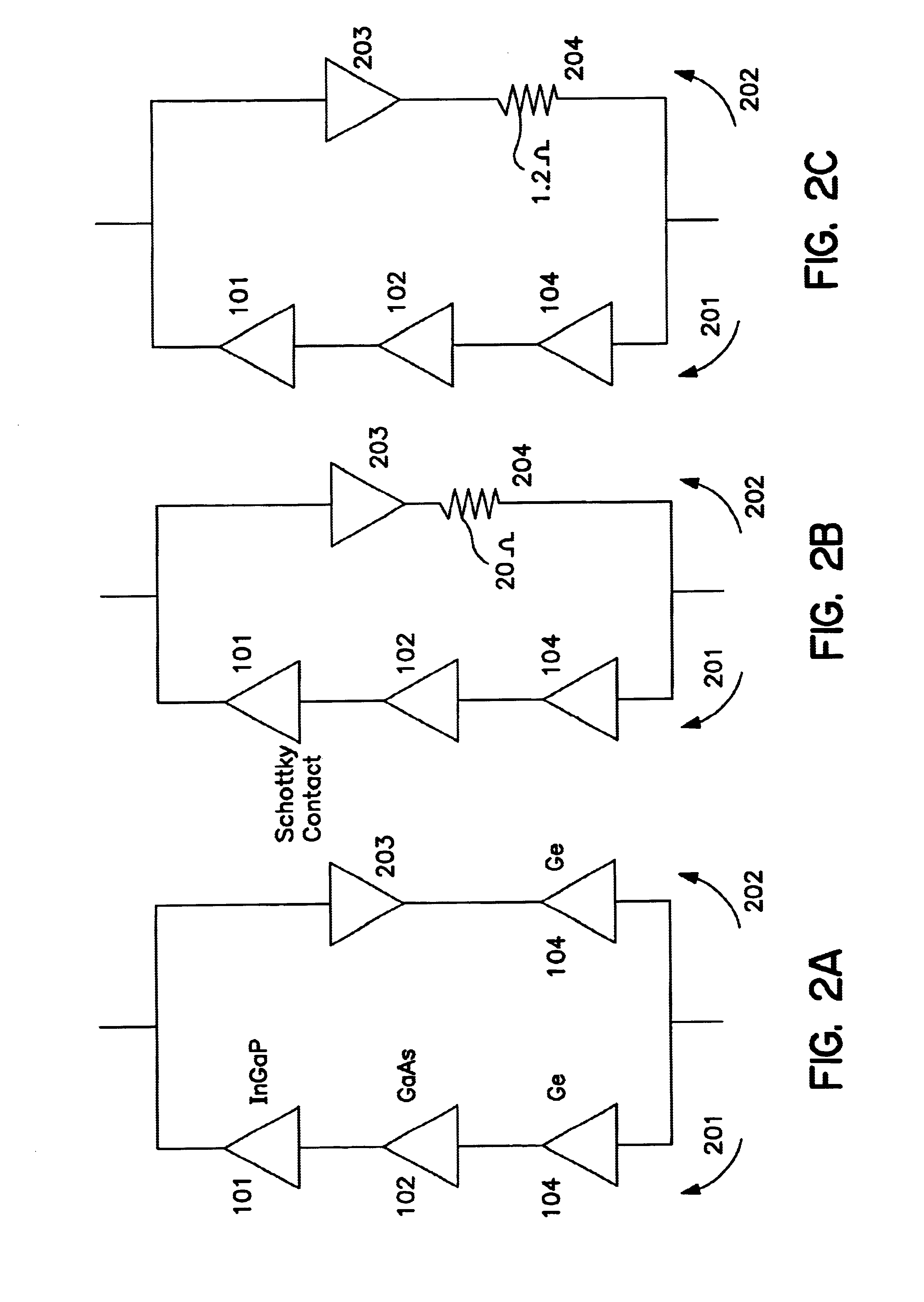Apparatus and method for optimizing the efficiency of a bypass diode in multijunction solar cells
a solar cell and bypass diode technology, applied in the field of photovoltaic cells, can solve the problems of degrading the cell, inoperable cells, and the inability of solar cells to meet the needs of more sophisticated applications
- Summary
- Abstract
- Description
- Claims
- Application Information
AI Technical Summary
Benefits of technology
Problems solved by technology
Method used
Image
Examples
Embodiment Construction
The following describes the present invention more fully with reference to the accompanying drawings, in which a preferred embodiment of the invention is shown. The present invention may, however, be embodied in many different forms and should not be construed as being limited to the embodiment set forth herein; this embodiment is provided so that this disclosure will be thorough and complete and will fully convey the invention to those skilled in the art.
The present invention relates to a multijunction solar cell with at least one integral monolithic bypass diode. The layers comprising the solar cell are particularly chosen for their combination of efficiency and manufacturability. As discussed below, one embodiment consists of a multijunction structure with at least three junctions, with a unique modified buffer structure.
The process of manufacturing the solar cell with an integral monolithic bypass diode is comprised of five distinct steps, which are described below.
FIG. 1 is an ...
PUM
 Login to View More
Login to View More Abstract
Description
Claims
Application Information
 Login to View More
Login to View More - R&D
- Intellectual Property
- Life Sciences
- Materials
- Tech Scout
- Unparalleled Data Quality
- Higher Quality Content
- 60% Fewer Hallucinations
Browse by: Latest US Patents, China's latest patents, Technical Efficacy Thesaurus, Application Domain, Technology Topic, Popular Technical Reports.
© 2025 PatSnap. All rights reserved.Legal|Privacy policy|Modern Slavery Act Transparency Statement|Sitemap|About US| Contact US: help@patsnap.com



